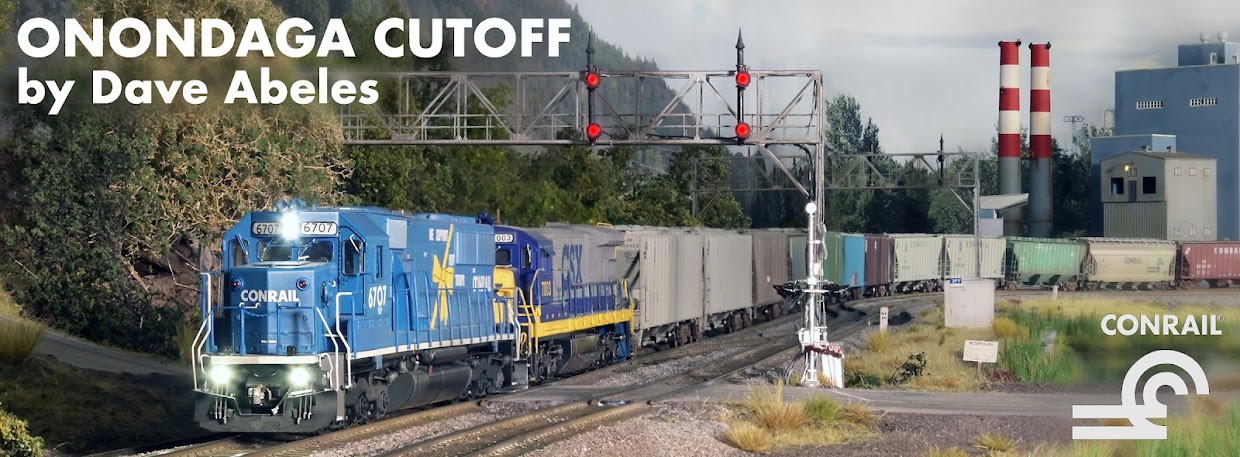Dumping glue on a perfectly working model is just not something that ever feels right.
I know, I know, it's 'just track.' But, track is a model too, and a critical one for railroad operations.
I've done it before and will again, but when weathered track is working just fine for operating sessions it sure is disconcerting then to have to go back and ballast it. This is not to say that the ballasting process bothers me: in fact, I enjoy it, more than other scenery element construction projects. many modelers dread ballasting, but for me it's satisfying. The part that is hard is dumping diluted glue over it!
We begin with the scene pre-ballast:
A quick vacuum job cleans any stray leaves or dust from the area before dumping ballast and the painstaking-yet-generalized process of tamping and regulating the ballast around the tracks. First I used Arizona Rock & Mineral's black cinders (N-scale sized) for the shoulders and trackside areas, followed by Arizona Rock & Mineral 'UP-WP-Silverton' mix, a dead ringer once washed and glued for Conrail's ballast in Central New York. The whole dump is glued together: I do not glue the shoulders first, then the main ballast, since some mixing is prototypical anyway.
This stretch of about 8 feet of track was dumped, tamped and regulated over about one hour's time.
Once tamping is completed and the edges are sculpted and regulated, it's time for business. The whole track structure is soaked with a mist of isopropyl alcohol, which washes the ballast dust down from the surface and breaks any surface tension. This is immediately followed by the glue itself. My mix is 1/4 part white glue, with a few tablespoons of isopropyl alcohol and a drop of dish detergent mixed in, and 3/4 water. This is shaken and mixed to a consistent, milky fluid, which is then dribbled out of the glue container on the ballast.
Again, this is the part that's hard to see: huge puddles of white mess all over otherwise beautiful models and scenery.
But, like so many things these days, it's the waiting that is the hardest part, and a 48-hour cure period will amazingly leave this whole mess looking just like prototype ballast - and yet it will be solidly glued in place. Some of the wiser of my group of friends have commiserated that the early 40's are like a distilled liquor: the first pass or two isn't even consumable, and it takes months and multiple trials to squeeze, heat and pressure something acceptable. A few more passes and maybe it's even beautiful. This is a good metaphor for life, and for modeling too. Sometimes it's the pressure and the stress of life's tests that will streamline, polish, and improve the outcome.
This ballasting is in preparation for the first-ever working grade crossing on the layout. That will be a big project - stay tuned!
More to come! Modeling season is in full swing on the Onondaga Cutoff!
~RGDave






No comments:
Post a Comment